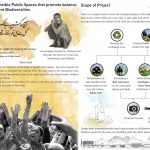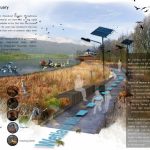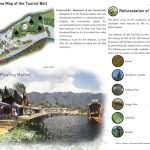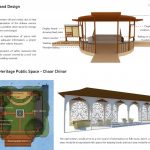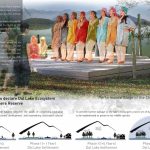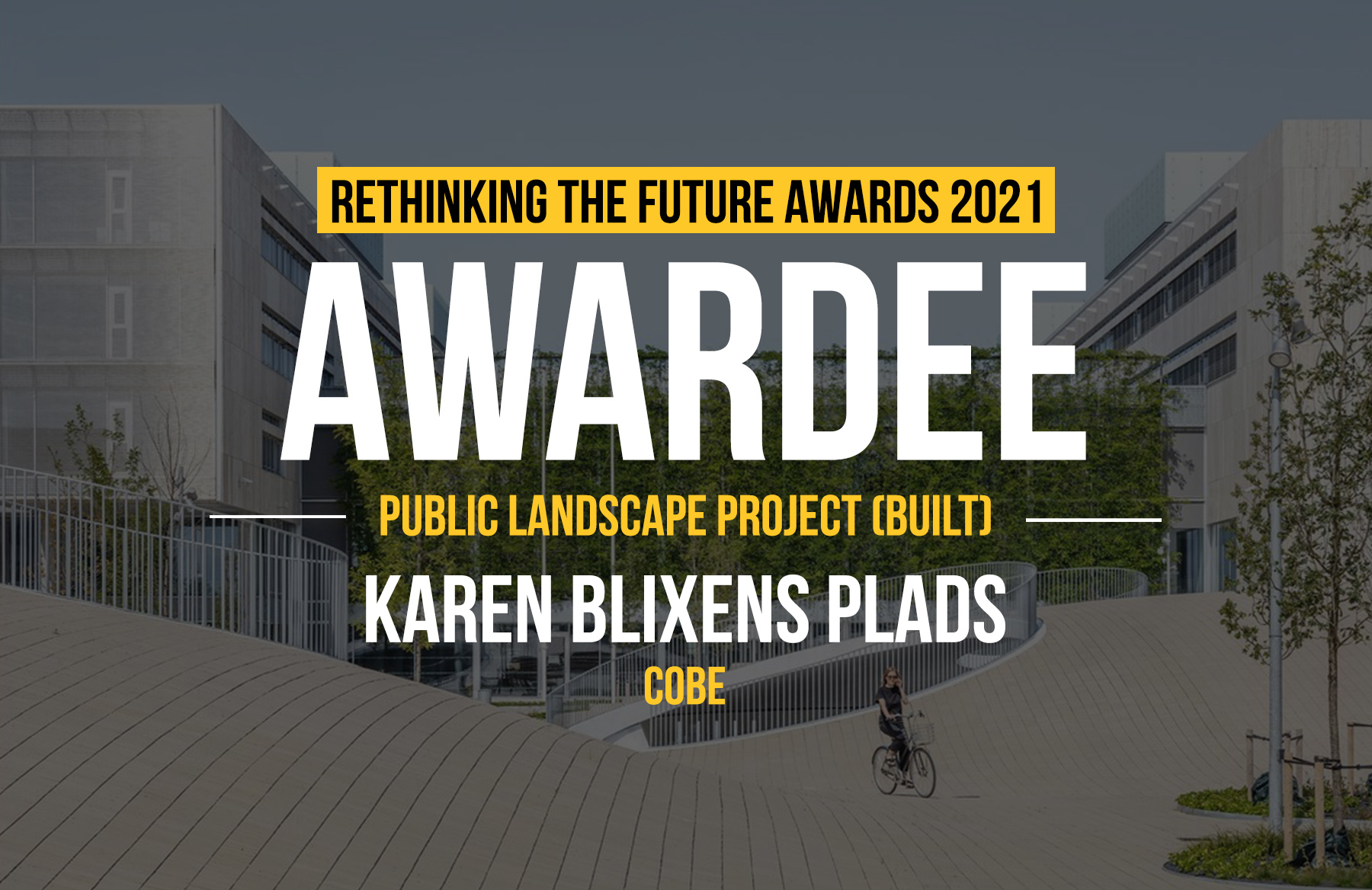The organic and incremental pattern followed in the growth of many of our towns and cities has been a direct response to circumstances of need and resources, their strong patterns and human scale were rarely deliberate consequences of conscious design. The Landscape of countryside is purely a by-product of the way we have chosen to settle and manage the land.
Honorable Mention | RTFA 2014 Awards
Category: Landscape Concept
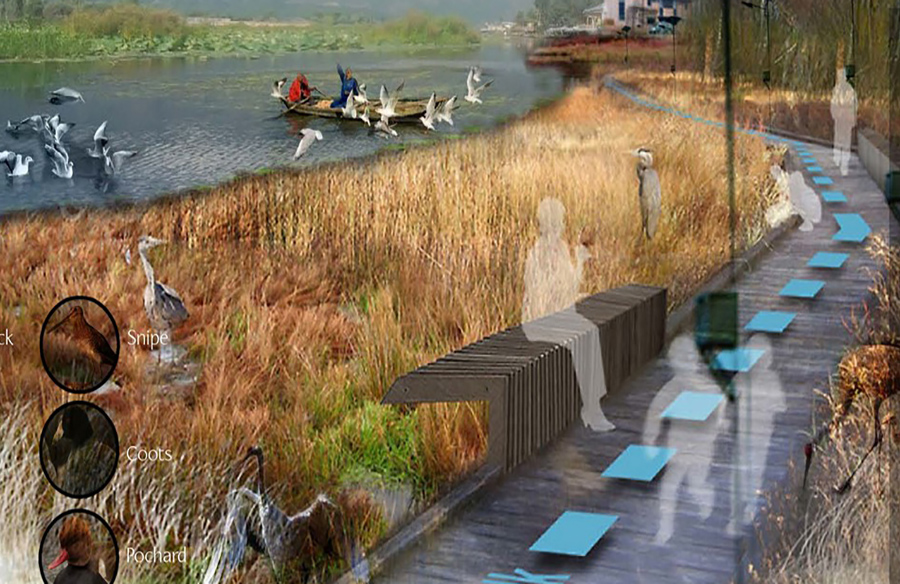
| Project Details | |
| Team Members: | Sabika Zaidi, Atia Khursheed, Reema Khan & Yusufzai Nadia Ali |
| Country: | India |
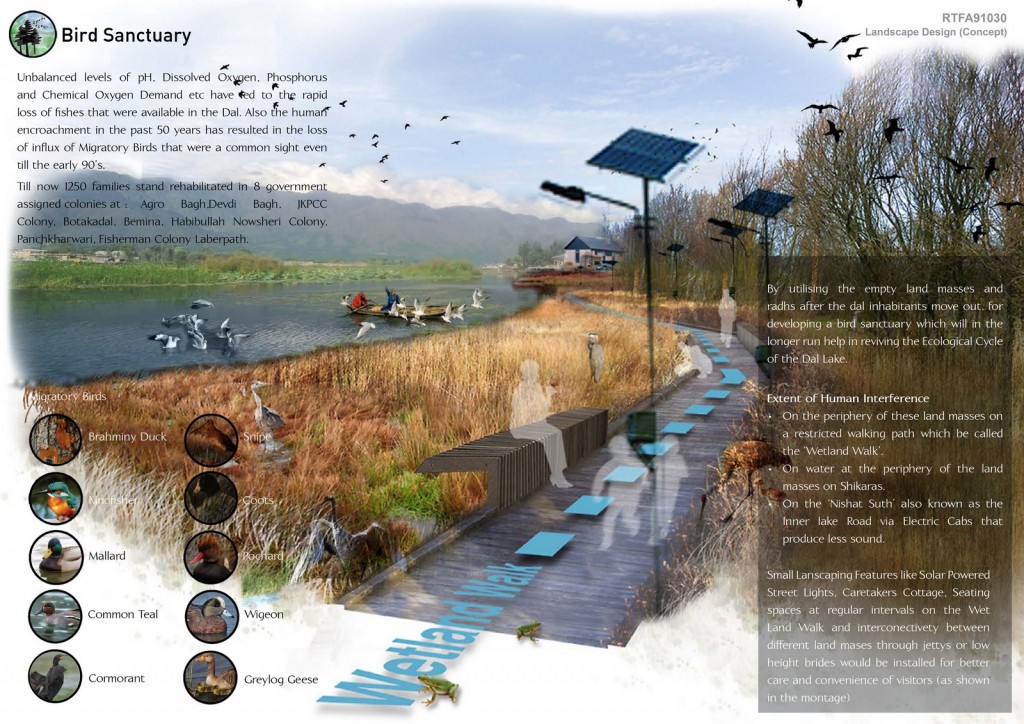
©Sabika Zaidi, Atia Khursheed, Reema Khan & Yusufzai Nadia Ali
In the Dal Lake settlement there exist complex interrelationships between soil and and forms, between the lost flora and fauna and the natural balance of the continuously degrading Lake which in itself constitutes to an ecological pattern.
The natural self- cleansing and self-feeding cycles of the Dal have been disturbed with the encroachments in form of floating gardens (Radhs) by the locals, death of natural springs due to siltation from the deforested catchment areas and disposal of waste from the STPs and the inland hamlets.There is an urgent need to revive the ecological pattern of the lake where migratory and local birds thrive, where fishes are more than a rare sight and where catchment areas are green enough to prevent the erosion of silt from the unnumbered streams of the Telbal Zone.The In-built resilience has been stretched beyond limits due to human fillies and greed. The very life and existence of the lake has been jeopardized. The major issues are:
- Inflow of silt, sedimentation from the catchment areas that has led to the closing of 150 out of 300 springs in the Dal bed, this has affected the self-feeding mechanism of the lake.
- Pollution of the lake water due to infested sewage from the hamlets and the STPs from the mainland.
- Encroachments in form of Radhs that have resulted in the reduction of open water area of the dal from 24sq.km to 11 sq.km.
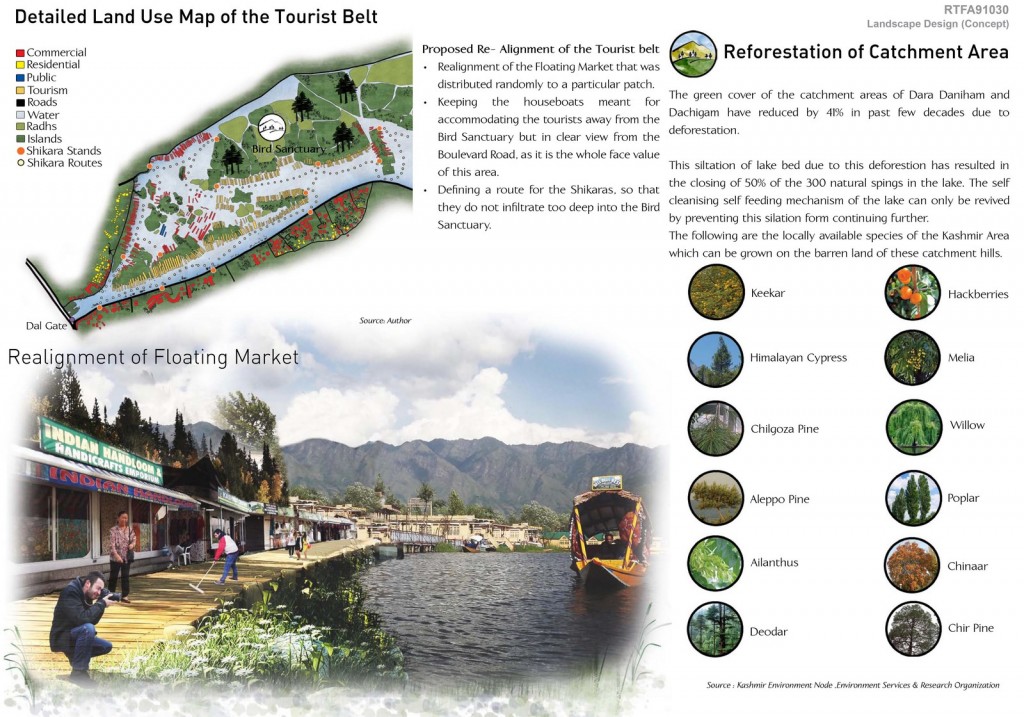
©Sabika Zaidi, Atia Khursheed, Reema Khan & Yusufzai Nadia Ali
Identifying the permissible and non-permissible activities in the different ecological zones of the lake and Creating a bird sanctuary, afforesting the catchment area and promoting tourist activities only in the floating market and houseboats, along with the revival of Chaar Chinar an old heritage public space might solve a few problems faced by the lake at a macro-level.
By utilising the empty land masses and radhs after the dal inhabitants move out, for developing a bird sanctuary which will in the longer run help in reviving the Ecological Cycle of the Dal Lake. Unbalanced levels of pH, Dissolved Oxygen, Phosphorus and Chemical Oxygen Demand etc have led to the rapid loss of fishes that were available in the Dal. Also the human encroachment in the past 50 years has resulted in the loss of influx of Migratory Birds that were a common sight even till the early 90’s.
- Realignment of the Floating Market that was distributed randomly to a particular patch.
- Keeping the houseboats meant for accommodating the tourists away from the Bird Sanctuary but in clear view from the Boulevard Road, as it is the whole face value of this area.
- Defining a route for the Shikaras, so that they do not infiltrate too deep into the Bird Sanctuary.
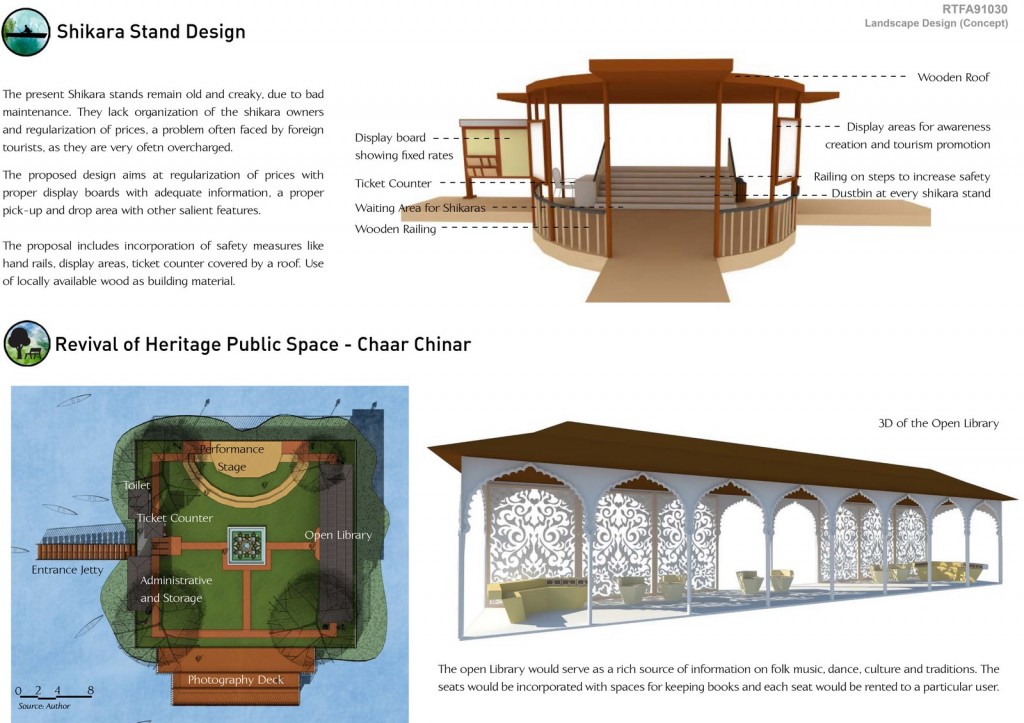
©Sabika Zaidi, Atia Khursheed, Reema Khan & Yusufzai Nadia Ali
The green cover of the catchment areas of Dara Daniham and Dachigam have reduced by 41% in past few decades due to deforestation.
This siltation of lake bed due to this deforestion has resulted in the closing of 50% of the 300 natural spings in the lake. The self cleanising self feeding mechanism of the lake can only be revived by preventing this silation form continuing further.The following are the locally available species of the Kashmir Area which can be grown on the barren land of these catchment hills.
Appeal to declare Dal Lake Ecosystem a Biosphere Reserve
- To achieve a sustainable balance between the goals of conserving biological diversity, promoting economic development, and maintaining associated cultural values.
- To prevent further damage to the lake’s ecosystem a strict set of by laws are required to be implemented to preserve the wildlife species.
- ©Sabika Zaidi, Atia Khursheed, Reema Khan & Yusufzai Nadia Ali
- ©Sabika Zaidi, Atia Khursheed, Reema Khan & Yusufzai Nadia Ali
- ©Sabika Zaidi, Atia Khursheed, Reema Khan & Yusufzai Nadia Ali
